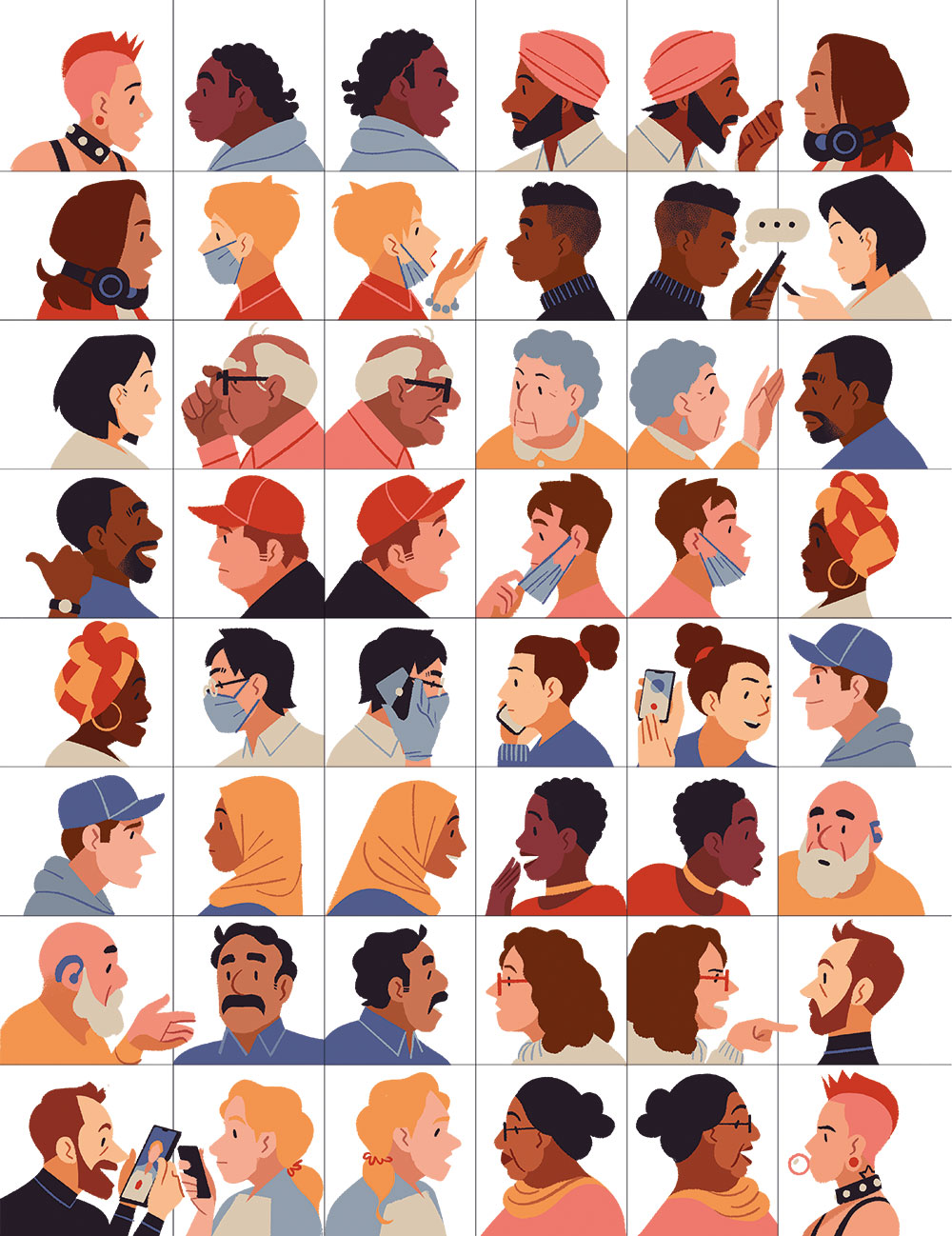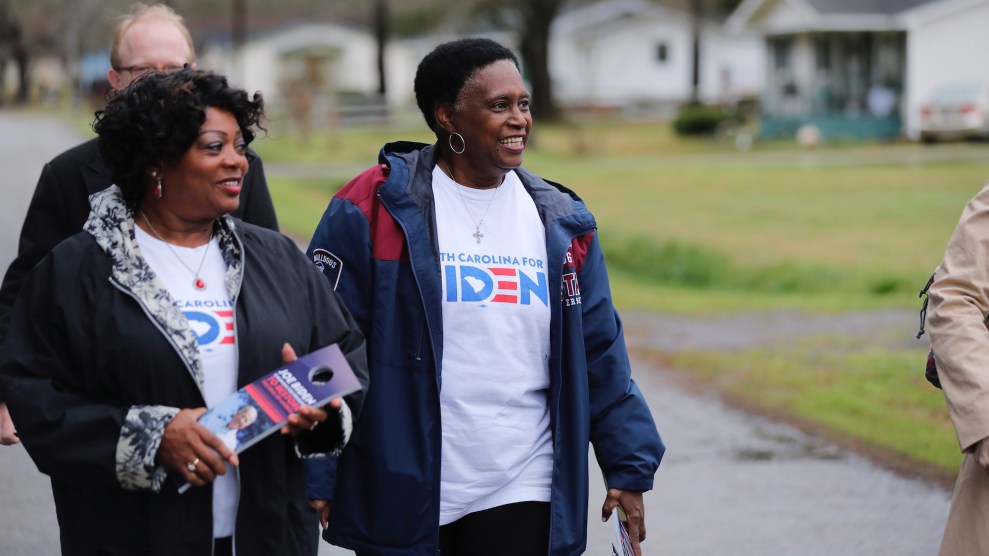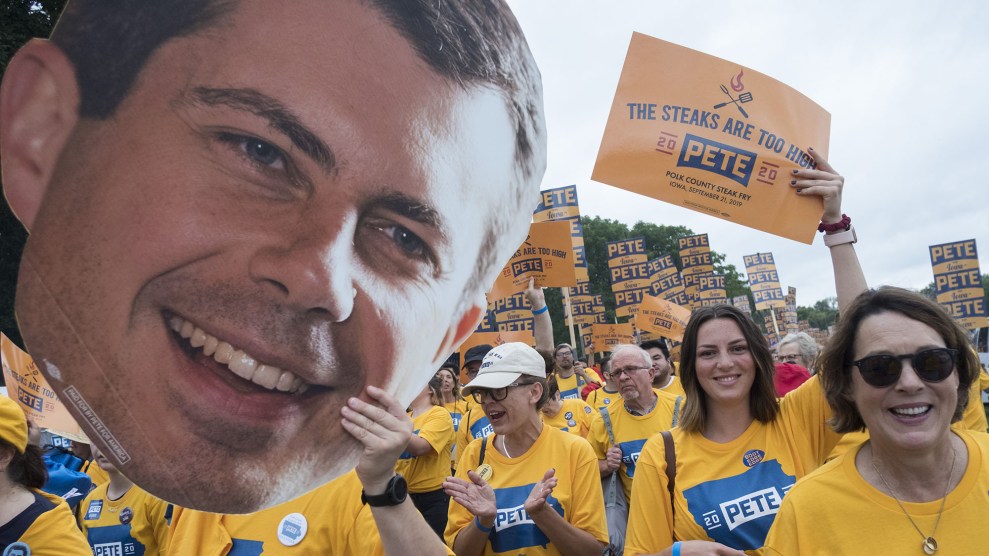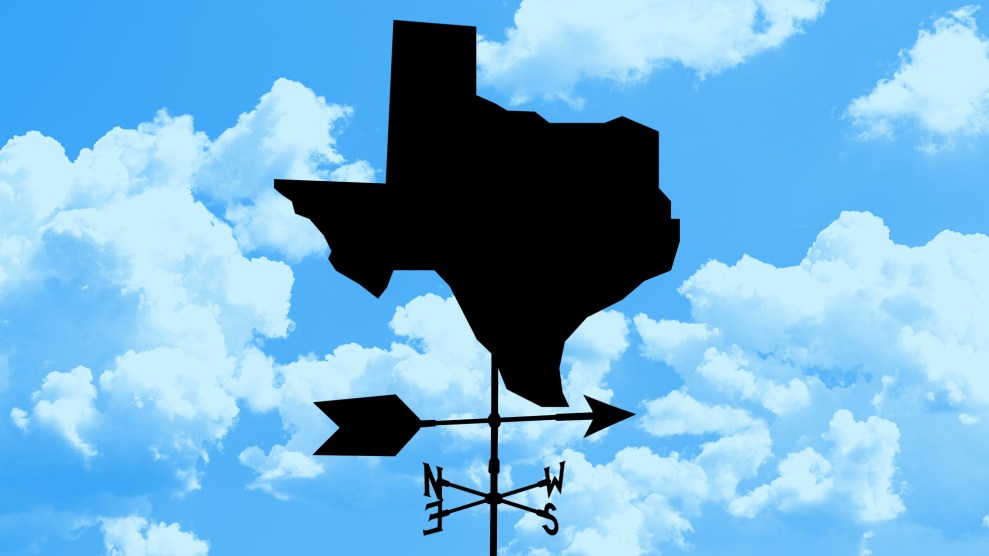In November 2017, Emily Isaac packed her belongings and flew to Texas. More specifically, to the 21st Congressional District, gerrymandered to include half of San Antonio, a scoop of Austin, and a large rectangle of Texas hill country, where a Bernie Sanders acolyte named Derrick Crowe was running for Congress. “We did all of the right things,” says Isaac, who had spent six months as a field organizer on Sanders’ 2016 presidential campaign. Crowe’s team built a massive door-knocking operation “dwarfing what our opponents were doing in terms of volunteers.” Isaac expected Crowe to win, but he came in third. “I left feeling like, ‘Wow, did any of that move the needle?’” she says. “That’s when I realized voters at the door will tell you whatever you want to hear to get you off the doorstep.”
A few months later, Isaac drove 150 miles east to work for another Democratic congressional candidate: Sri Kulkarni of Sugar Land, outside of Houston. The district has been a Republican stronghold since the 1980s, but there was promise for Democrats in its growing diversity, including immigrant communities from South and East Asia. Unfortunately, the voter file provided by the Democratic National Committee lumped them all together as “Asian,” an overly broad category for people with different cultures and languages. So Isaac’s team tasked volunteers from those communities to sort the 85,000-row spreadsheet by surname, dividing entries into more than 20 community categories, from Arab Christian to Zoroastrian. The campaign would ultimately run phone banks in 15 languages.
As the volunteers pored over the spreadsheet, they added personal notes: “This family moved” or “in college and needs an absentee ballot.” One star organizer was a student named Chris. “We would give him a list of the 18-year-olds zoned to his high school, and he knew like 160 of them.” But he could also spot who wasn’t on the voter list and needed to be registered. “It was this lightbulb moment,” says Isaac. “Not only are our volunteers able to reach these folks in their preferred language, they personally know so many of them.”
Though Kulkarni narrowly lost, his organizing strategy was a clear success, bringing him within five points of his opponent—the closest margin the district had seen in over a decade. Kulkarni announced another run in 2020, but Isaac didn’t stick around. This new way of campaigning was too big to keep in Texas.
While working for Kulkarni, Isaac began to hear a buzzy new term: “relational organizing.” At its most basic, relational organizing is simply facilitating conversations between friends, family, neighbors, and co-workers. Instead of relying on traditional strategies like door knocking, phone calls, or texts from strangers, it harnesses existing relationships to mobilize voters. It was, Isaac realized, exactly what she’d been doing.
A handful of progressive organizers deployed the tactic in 2016 and 2018. Their efforts were tracked with the help of the Analyst Institute, a secretive progressive research firm whose meta-analysis of voter turnout studies found that outreach from friends and family was three times more effective at mobilizing voters than a door knock.
Effectiveness made relational organizing attractive, but the coronavirus has made it urgent. Unlike traditional mobilization tactics, relational organizing is adaptable to social distancing. Kristee Paschall runs an organizing program for 50 progressive groups across the country through Community Change Action, a nonprofit focused on empowering low-income communities. In early March, she realized that campaigning had changed overnight—how can you ring doorbells or hold rallies during a pandemic? Her small team set up Zoom trainings on relational organizing, unsure if anyone would come. Within weeks, nearly 300 organizers showed up. This summer, as the Black Lives Matter movement transformed the political landscape through community mobilization and difficult conversations, these organizers saw proof of concept.
With the pandemic having forced hundreds of voter mobilization groups to embrace relational organizing, the November election will provide a clear test of its potential. The tactic will be “exponentially bigger and more important” this year than ever before, says Paschall. “It’s going to be a major part of the 2020 playbook,” agrees Nick Chedli Carter, managing director of Resilient Democracy, a civic engagement initiative. In key swing states like Wisconsin, Pennsylvania, and Michigan, where dips in participation, particularly among Black voters, hurt Hillary Clinton four years ago, community groups run by and for people of color have turned to relational organizing. One of them is Voces de la Frontera Action, which set out to engage 23,000 Latinos and other voters in Wisconsin who were unlikely to vote in 2020—Trump’s margin of victory there four years ago—and by September was already two-thirds the way there. The political arm of the civil rights group Color of Change is using relational organizing. “For me, relational totally makes sense and is in line with generations and generations of organizing work,” says Arisha Hatch, the group’s vice president and chief of campaigns.
Community-based groups already steeped in organizing have been quicker to use the strategy than candidates have. Political campaigns are often cautious, risk averse, and shaped by what’s worked before. With high stakes and limited resources, innovation is constrained. So while Democratic candidates have taken note of relational organizing, few, including Joe Biden, have fully embraced it. To the dismay of organizers who believe the resources of a presidential campaign could be harnessed to engage Americans on a transformative scale, his campaign’s strategies skew toward the conventional. “We’re in the fight right now for the soul of our democracy,” says Paschall, “and more digital ads and more television isn’t the answer.”
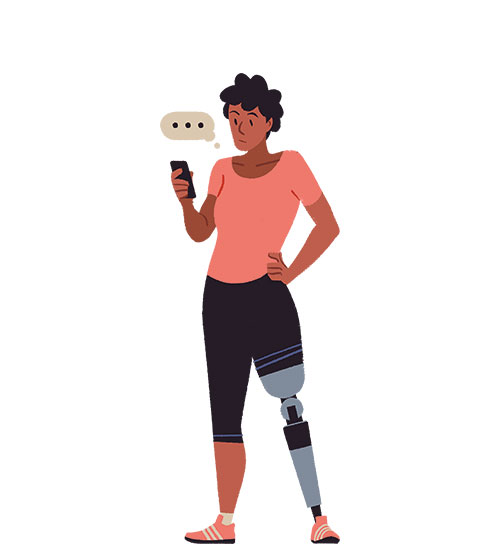
The first thing relational organizing evangelists say is that their approach is nothing new. Word-of-mouth and community-based activism were the backbone of the civil rights, women’s rights, farmworkers’, and labor movements. Political parties once had their own local networking machines, for better or worse, facilitated by free holiday turkeys, reliable snowplowing, and government jobs for somebody’s nephew. But in the second half of the 20th century, just as more Americans gained access to the ballot box, campaigns turned to consumer-based approaches like television advertising, and mass marketing became the primary way politicians reached voters.
As Madison Avenue and opinion pollsters continued to remake politics as a business, the people-based movements of the 1960s—civil rights, feminism, environmentalism—fractured into specific issue-based advocacy organizations in the 1970s, according to Johns Hopkins political scientist Hahrie Han. Direct-mail campaign tactics drew on marketing innovations, and armchair activists were encouraged to cut checks—not take to the streets.
Today, in the era of big data, microtargeted Facebook ads, and Instagram influencers, voters are widely seen as something to be activated, not people with agency. In 2018, Han and her colleague Paul Speer noted that campaigns had begun to use the abbreviation RP to refer to “‘real people’—as in ‘We have to find some RPs to stand behind the candidate,’” exemplifying “how professionalization of politics has turned ordinary people into pawns.”
“If people start to feel like they don’t really have a voice in democracy and they’re basically an interchangeable cog, then they disengage from it,” Han warns. “And that’s bad for democracy overall.” It’s ultimately self-defeating for campaign consultants, too. As voters drift away, putting together a winning electoral coalition becomes more elusive.
Barack Obama’s 2008 campaign came as an exception to the trend, as he established an organizing juggernaut that mobilized 2.2 million volunteers and tapped into their relationships. Even though the term wasn’t used then, “the foundation of the first Obama campaign was relational organizing,” says Joy Cushman, who, as a deputy field director, oversaw a team in South Carolina that trained supporters to build lists of people they knew and invite them to their homes to discuss the upcoming Democratic primary, which Obama resoundingly won. “Historically, there have just been very separate cultures between our political culture and our movement-building organizing culture,” she says. “The Obama campaign was a unique moment when those two came together.” That November, the highest percent of eligible voters turned out since 1968, powering his historic victory.
Since Obama’s win coincided with the rise of social media, the benefits of data and online microtargeting were overhyped. In 2012, journalists focused on the “data crunchers,” “tech gurus,” and “digital wizards” who contributed to his reelection, reinforcing the narrative that tech wins elections and increasing their sway within the party. After that contest, the Republican National Committee invested in tech but also in field organizing. That legwork served Trump well, and “really should get more of the credit for that victory,” a former data analyst contracted with the RNC, Lucy Caldwell, told Mother Jones earlier this year. “The best way to know how people are going to vote or how they feel about something is to ask. That’s what the RNC field team was doing really, really effectively in 2016.”
Despite the GOP’s grassroots work, Trump’s surprise victory was largely credited to his campaign’s virality on Facebook, and its digital director, Brad Parscale. The news media bought into the hype about Cambridge Analytica, a snake-oil operation that had promised Trump physiographic modeling of Facebook data. Both the Republican and Democratic parties embraced the idea that data and targeted digital operations were the key to victory in 2020. By 2019, activists like Cushman were warning that the party had misread the lessons of the past few election cycles, emphasizing data over organizing.
The impact of field organizing got lost, an oversight that continues to impede the spread of relational tactics. “This is a significant choice point for us as a movement,” says Cushman, who describes that choice as tech first versus people first. “It’s not that data doesn’t matter or that technology doesn’t matter. It does,” she says. “But is it in service to building a broad, excited, and motivated base of people? I think many elites on the left see the election as a technocratic exercise in maximizing cost per vote. And it’s killing us.”

Han is the co-author of Groundbreakers, a nuts-and-bolts account of how Obama leveraged social networks in 2008. For her, a key of successful relational strategies is that they create a sense of loyalty that doesn’t just increase voter turnout in a single election, but changes and strengthens communities beyond Election Day.
To illustrate this, she cites social scientist Albert O. Hirschman’s Exit, Voice, and Loyalty, an influential 1970 treatise on consumer choice and politics. His idea is straightforward—if you don’t like a product, you have two options: Voice your concern and hope to prompt change, or exit and do without. “If I decide that I don’t like Froot Loops anymore, I stop buying Froot Loops and I start buying Cheerios,” Han says. “Whenever I don’t like a product, then the strategy is just to exit.” The marketization of politics has made exit a tempting choice in elections, too. But in civic life, exit is the wrong choice. “If I don’t like what an organization is doing or I don’t like a candidate, the strategy should not be exit, it should be voice,” Han says. “The extent to which I have loyalty to the community or to the organization is going to determine the extent to which I’m willing to engage in the processes of exercising voice.”
That’s why Han and others believe relational organizing holds the most promise for people of color and other communities that historically lack political power. The possibility is being demonstrated right now, as polls show that a majority of Americans are awakening to racism in policing. That could not have happened without Black Lives Matter, a textbook example of relational organizing.
The movement gained prominence amid the 2014 protests in Ferguson, Missouri, spawning grassroots chapters across the country and preparing communities for continued activism. In a 2016 interview with the New Yorker, founding BLM co-organizer Patrisse Cullors endorsed a leaderless structure with the goal of “the masses understanding that we can catalyze a movement in our own community.” Even before George Floyd was killed in Minneapolis, the city had a robust Black Lives Matter presence, community organizing networks, and faith-based relational organizing programs. As protests and viral videos of police brutality spread, more Americans were pulled into the movement through conversations about race with friends and family. Protests were captured on social media, building peer pressure to get involved even as the pandemic kept people apart. As many as 26 million people marched or protested in a matter of weeks after Floyd’s death, a mobilization unequaled in recent history. “The uprisings are evidence of how powerful relational organizing is when it’s completely unhindered and completely unleashed,” says Cushman.
The question is “how we go from this moment in June to a broader movement that’s actually able to make measurable change on questions of racial inequality,” Han says. To her, the answer lies in “the extent to which they’re able to create a set of relationships that generate the kind of constituencies that stand with each other over time.”
In its strongest form, relational organizing redistributes power from the people who run campaigns to the voters they are trying to win over. This helps explain why community groups have moved more quickly to adopt the tactic, while some top-down political campaigns may wince at distributing political power to the grassroots. But Democrats are particularly harmed by poorer communities of color dropping out of political life, and in turn those communities are harmed when they are unable to hold elected officials accountable. These same voters are also key to Democrats’ ability to win swing states, where small margins could decide the presidency. “Getting especially new voters, voters of color, infrequent voters to vote…that’s the most immediate way that people are seeing it as extremely relevant for 2020,” says Carter of Resilient Democracy.
Relational organizing is uniquely suited to the coronavirus era, and not just because traditional options aren’t available to campaigns. As trust in government and institutions has shrunk and Americans have sorted into news silos, relational organizing relays information through trusted messengers rather than strangers. With misinformation and deliberate voter suppression already rife, the pandemic will create the most chaotic election in modern history with millions learning to cast mail-in ballots. “You had a trust deficit before COVID,” says Carter. “Now, it’s hard to imagine people not being even more particular about where they get information, who you talk to. The need to have trusted messengers couldn’t be more immediate.”
“The challenge has been to get people to be willing to talk to people that they know, as opposed to calling through lists,” says Ben Wikler, chair of the Democratic Party of Wisconsin. “But the coronavirus has profoundly changed what people are willing to do. With COVID, it feels like doing your friends a favor to help them figure out how to vote safely as opposed to feeling like you’re nagging.” In April, as Wisconsin Democrats faced a primary and a state Supreme Court election, many expected the virus to act as a vote suppressant—especially since conservative officials blocked measures to make voting easier. To fight back, Wikler says, Democrats “ramped up classic relational organizing programs,” recruiting people to reach out to fellow parents or church members. As the relational work continued, absentee ballot requests rose. “The results,” he says, “were dramatic. People who we interacted with were massively more likely to cast absentee ballots. We created a playbook that we’re going to now run against President Trump to turn Wisconsin blue in the fall.”

As a college student, Greta Carnes took her first campaign job as a field organizer in Iowa for Obama’s reelection campaign. After graduating, she returned to electoral work, eventually taking a position running Virginia Democrats’ texting operation in 2017. Her job was “to sit in HQ and pull huge lists of people and get our volunteers to text them,” she says. “The more I did it, the more I just found that this is such a transactional way to approach people.” She wanted to find a better approach, so she took a job at an emerging Democratic digital mecca, a hot new firm called Acronym.
“Silicon Valley’s response to Hillary losing was, ‘We need better tech,’” Carnes says. With a proliferation in apps for campaigns, Carnes and a small Acronym team began testing them, including several designed to facilitate relational organizing. One of the best was created by Wisconsin’s Organizing Empowerment Project, a nonprofit run by Mike Pfohl, who became a mentor to Carnes. Pfohl recalls her saying in 2018 that “relational is how you win the Iowa caucuses.”
When the 2020 campaign ramped up, Carnes seized a chance to test her theory. In April 2019, she left Acronym and moved to South Bend, Indiana, to become Pete Buttigieg’s national organizing director. In Iowa, Carnes and Buttigieg staffers recruited people to reach out to their networks, expanding the campaign’s volunteer and supporter base through relationships. Despite Carnes’ experience with apps, the campaign decided that using one would hold them back, instead tracking progress largely on paper. “With an app, you’re really just limiting who’s doing the work to people who feel comfortable with apps or people who have experience with smartphones,” she says. On caucus night, the results were delayed by a glitchy new vote-reporting app that, ironically, had been funded by Acronym. But when counting was over, Buttigieg had won by a razor-thin margin.
While Carnes says she’d use an app if she were running a national campaign, Buttigieg’s largely offline effort proved to her that the key to relational organizing is not the tech, but conversations. Pfohl, whose app impressed her, agrees: “I like to say relational organizing is 80 percent field, 20 percent technology…Nothing replaces the actual human interactions.” Letting the tech do the work—say, by using a scripted text prompt instead of a message written by a friend—inevitably has a different effect. Suddenly the target voter is back to being a consumer rather than a partner. “Part of the reason why this stuff is effective is because it’s authentic,” says Carter. “If you take away that authenticity from it, and you make people feel like cogs in the machine, then their enthusiasm isn’t going to be as strong. The recipients of the message are going to know it’s not real.”
Another problem with overreliance on technology to drive votes is that it is based on lists of registered voters, which are often full of bad data and omit people who can be turned out to vote for the first time. In 2018, Paschall and Community Change Action ran a relational voter registration drive where volunteers in Florida, Michigan, and Nevada mapped their communities. More than 60 percent of the targeted people identified by the volunteers couldn’t be found in the voter files. After the election, that number had flipped; 64 percent of people contacted were now registered to vote. The experience demonstrated to Paschall that “the information in the voter file is just frankly terrible for voters of color, and for young voters, or voters who have to move on a regular basis. It’s just not a reliable source.”
As of September, Paschall says 45 percent of the people reached through her groups’ 2020 relational program are either unregistered, infrequent voters or have never voted. Those kinds of gaps are apparent to at least some of the people who compile and deploy such data. One of them is Democratic data analyst David Shor. He believes that while voter-targeting models still have a role, relational organizing may be so effective at finding voters that data targeting just gets in the way. “Something that really hampered Democrats in the last five years or so is that we’ve been really obsessed with having this list of our own data,” Shor says. “You honestly know more about your friends than the Democratic Party does.”

In January 2019, Emily Isaac met with Claire Sandberg, a fellow organizer, for lunch at a Korean restaurant in Washington, DC. Isaac told her about the new kind of campaign she had just run in South Texas. Sandberg was impressed. “She was like, ‘We have to do this on the Bernie campaign,’” Isaac recalls. When Sandberg became Sanders’ national organizing director not long afterward, she hired Isaac to lead a relational organizing effort. “All of our field organizers, who I would train on relational organizing, I would tell them about Sri’s campaign and how we did things,” Isaac says. “Hundreds of organizers have been trained on this Sri Kulkarni model.”
At first, Isaac got signals that relational organizing was not a priority for the campaign’s top brass. “Everything was compared to 2016,” she says. “We didn’t do relational organizing in 2016. And the main metrics that senior leadership were interested in were the traditional contact types of door knocks and phone calls. In the beginning, it didn’t seem like relational was scaling fast enough, and I think there was just a distrust that it was a good investment.”
But the campaign did build its own relational app, called Bern, which allowed supporters to send their contacts messages and reminders about how to vote. App users could also rate their contacts’ feelings about Sanders on a scale of 1 to 5, helping the campaign identify untapped and enthusiastic supporters. The campaign’s analysis of early voters in Super Tuesday states found that those who received a text through the app were 3.2 percent more likely to vote, a number that may sound small, but represents a substantial gain in the cutthroat world of voter turnout. Sanders’ decision to stay in the race until April gave operatives a taste of the technique’s potential to replace traditional field work. “Once COVID hit, the campaign was super, super happy that we invested in the Bern app and that we had decided at the outset of the campaign to invest in relational digital organizing,” says Isaac. “Otherwise we would have been totally crippled.”
The app had its limitations, including that it was overwhelmingly used by young people. But by the end of the campaign, 300,000 users had sent 300,000 texts through the app and had identified 1.5 million supporters. According to former campaign staff, an internal analysis found that Bern’s relational component correctly identified Sanders supporters 93 percent of the time, far more accurate than door knocking, phone banking, or text messaging. Voters might lie to a stranger standing on their porch, but they told the truth to people they knew.
In 2020, the Biden campaign’s massive war chest makes it the biggest potential funder of relational outreach. The campaign launched its first relational app in December, and another in June with the help of a developer behind the Bern app. At the end of August, the campaign would only say that “more than” 100,000 actions had been taken by supporters in the app, which includes ways to reach out to friends and family. But as the Sanders campaign’s experience shows, app outreach is limited to supporters willing to use one. The Biden campaign had, until recently, largely left to independent organizers the deeper work of training volunteers to engage their own circles. Two years ago in Texas, Isaac watched with amazement as 250 volunteers identified 12,500 new supporters in the span of a month. That November, those new supporters were 5 percent more likely to vote than registered voters. While apps get deleted, investing in a program like Kulkarni’s nationwide is an investment in people—not just as voters in November, but as empowered citizens ready to meet near- and long-term challenges.
“What happens if Trump loses but doesn’t want to leave office?” Paschall wonders. “What happens when we actually want to pass big, visionary, bold agendas? We’re going to need this base of people.”
